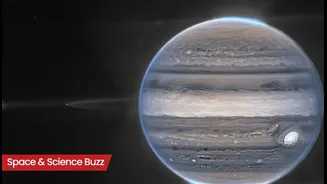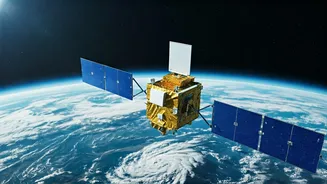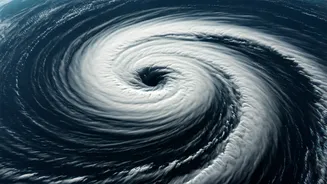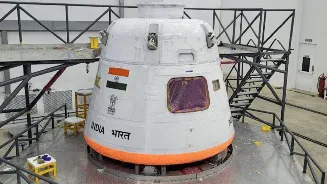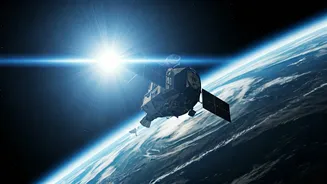Here are today’s most important updates from the realm of Science and Space.
Earth Exists Thanks to Jupiter? New Study Reveals the Surprising Truth
Jupiter was shaping the fate of our solar system long before Earth came into
existence. A new study conducted by scientists at Houston-based Rice University has revealed that this giant planet created gaps in the early solar system that prevented the building blocks of Earth from being pulled into the Sun. The study shows that as Jupiter grew in size, it blocked the flow of gas and dust toward the inner solar system. This process stopped the material that later formed Earth, Venus, and Mars from spiraling into the Sun. According to scientists, Jupiter's powerful gravity not only helped in stabilising the orbits of the inner planets, but also influenced the entire structure of the solar system. It created rings and gaps that determined when and under what conditions rocky planets would form.
After 80 Years, Scientists Finally Crack the Sun’s Temperature Paradox

Researchers have made a landmark discovery in solar physics by directly observing small-scale waves in the Sun’s corona, elusive magnetic waves that have baffled scientists for more than 80 years. The breakthrough, published in Nature Astronomy, was achieved using the Daniel K. Inouye Solar Telescope (DKIST) in Hawaii, the world’s most powerful solar observatory. The phenomena, termed the torsional Alfven waves, could finally unravel the mystery of the Sun’s super-hot outer atmosphere, offering vital clues to how the corona reaches temperatures of millions of degrees while the solar surface remains comparatively cool at about 5,500°C. The research will help refine space weather models, advancing our ability to forecast solar storms that can disrupt satellites, GPS, and power grids on Earth.
India’s Oceans Get a Space Upgrade: ISRO’s CMS-03 Prepares for Launch

ISRO is set to launch the advanced CMS-03 communication satellite aboard the LVM-3 rocket, strengthening India’s space-based communications and maritime security capabilities. The satellite will lift off from the Satish Dhawan Space Centre in Sriharikota on November 2, 2025. The CMS-03 is a multi-band communication satellite, designed to provide robust telecommunication coverage across India and an expansive oceanic region surrounding the subcontinent. This advanced platform will significantly enhance connectivity, provide sharper and higher-capacity bandwidth, and improve digital access to remote territories, facilitating both civil services and strategic applications, such as communications for the Indian Navy.
Hope Blooms: Extinction Rate Among Species Slows for the First Time in Decades

Prominent new research challenges the widely held belief that Earth is currently undergoing a sixth mass extinction, suggesting instead that extinction rates peaked about a century ago and have since declined. Scientists Kristen Saban and John Wiens from the University of Arizona analysed nearly 2 million species over the past 500 years and found that extinctions among plants, arthropods, and land vertebrates were highest around 100 years ago and are not rapidly accelerating as previously thought. While islands saw extinctions largely from invasive predators introduced by humans, continental extinctions were more often linked to habitat destruction, which remains today's leading threat. The team found no evidence of increasing extinctions due to climate change in recent centuries, though they acknowledged climate remains a threat going forward.
